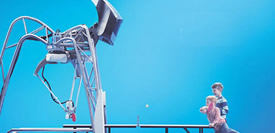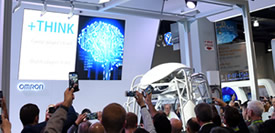OMRON Releases E3AS Series Reflective-type Photoelectric Sensors, Providing the Smallest Body and Longest Sensing Distance of 1,500 mm in the Class- TOF, an advanced detection principle, and the industry's first antifouling coating realize revolutionary "ease-of-use”.
September 30, 2019
OMRON Corporation (HQ: Shimogyo-Ku, Kyoto. President and CEO: Yoshihito Yamada) will globally launch E3AS Series Reflective-type Photoelectric Sensors (*2) on October 1, 2019, which provide the smallest (*1) body and longest sensing distance of 1,500 mm in the class. The sensors can provide stable detection without being influenced by the sensing distances or objects (colors, materials, and surfaces, etc.). This makes selection, adjustment, and maintenance of sensors easier, and improves system commissioning and operation rates.
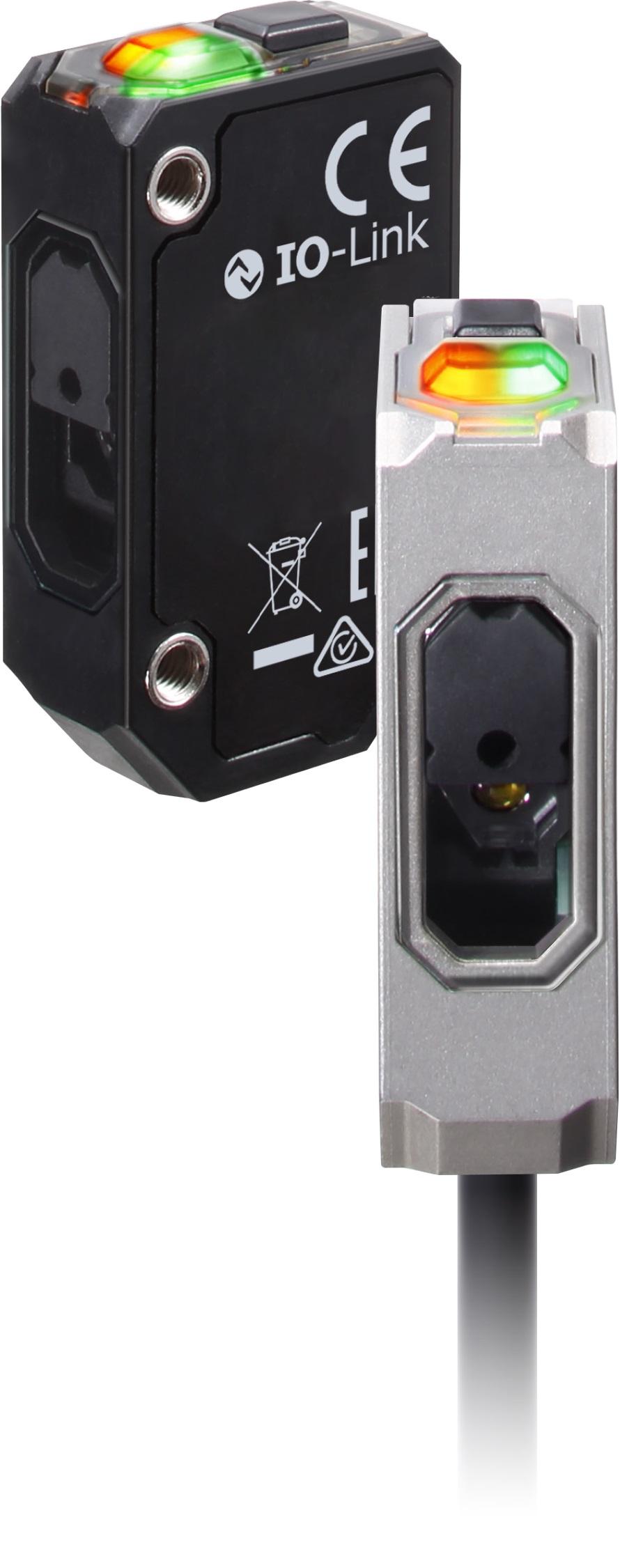 Compact E3AS Series Reflective-type Photoelectric Sensors are equipped with TOF (*3).
Compact E3AS Series Reflective-type Photoelectric Sensors are equipped with TOF (*3).
In order to satisfy various consumers' needs, products have become more advanced, diversified, and got shorter life cycles. As a result of advanced equipment and shortage of skilled workers, quick system commissioning and stable operation are critical management issues at manufacturing sites.
Given these conditions, the need for reflective-type photoelectric sensors with the integrated emitter and receiver is increasing. They remarkably increase the equipment design flexibility as receivers and reflectors do not need to be installed. This helps halve the sensor installing work. On the other hand, the operation stability of conventional reflective-type photoelectric sensors varied with colors, materials, and surface conditions of sensing objects. Therefore, experiences and skills are required for sensor selection and positioning. It was also difficult to achieve both downsizing and long sensing distances, which led to limited applications.
OMRON developed the E3AS Series with the smallest body in the class and the long sensing distance of 1,500 mm, five times longer than the previous models (*4). The detection principle of the E3AS Series is Time of Flight (TOF), to enable high detection stability regardless of the characteristics of sensing objects. This makes it easier to select and adjust sensors. In addition, the industry's first antifouling coating on the sensing surface reduces false detection and maintenance frequency in environments where oil or dust scatters, or steam generates. The E3AS Series helps improve system commissioning and operation rates in the conveyance and assembling processes.
OMRON set forth a strategic concept called "innovative-Automation" consisting of three innovations or "i's"--"integrated" (control evolution), "intelligent" (development of intelligence by ICT), and "interactive" (new harmonization between humans and machines). OMRON currently has the most comprehensive automation product portfolio in the world that spans the spectrum of ILOR+S (input, logic, output, robotics+safety), providing the foundation for the innovation of manufacturing by the automation. By improving system commissioning and stable operation using the E3AS Series, OMRON continues to solve problems at manufacturing sites including labor shortages, and accelerates the materialization of "innovative-Automation" together with its client companies.
Features
1.Smallest body and longest sensing distance of 1,500 mm in the class
It has been necessary to select sensors according to the required sensing distance. The E3AS Series, with a wide sensing range of 50 to 1,500 mm, eliminates the need to select sensors for each application. The metal and plastic cases are offered, enabling users to choose the model that meets their installation environment requirements.

2.Detection performance less influenced by sensing objects (colors, materials, surfaces)
With conventional photoelectric sensors, prior evaluation or positioning was required for each sensing object. The E3AS Series detects sensing objects varying in colors and materials by the set distance, enabling less evaluation and adjustment time.
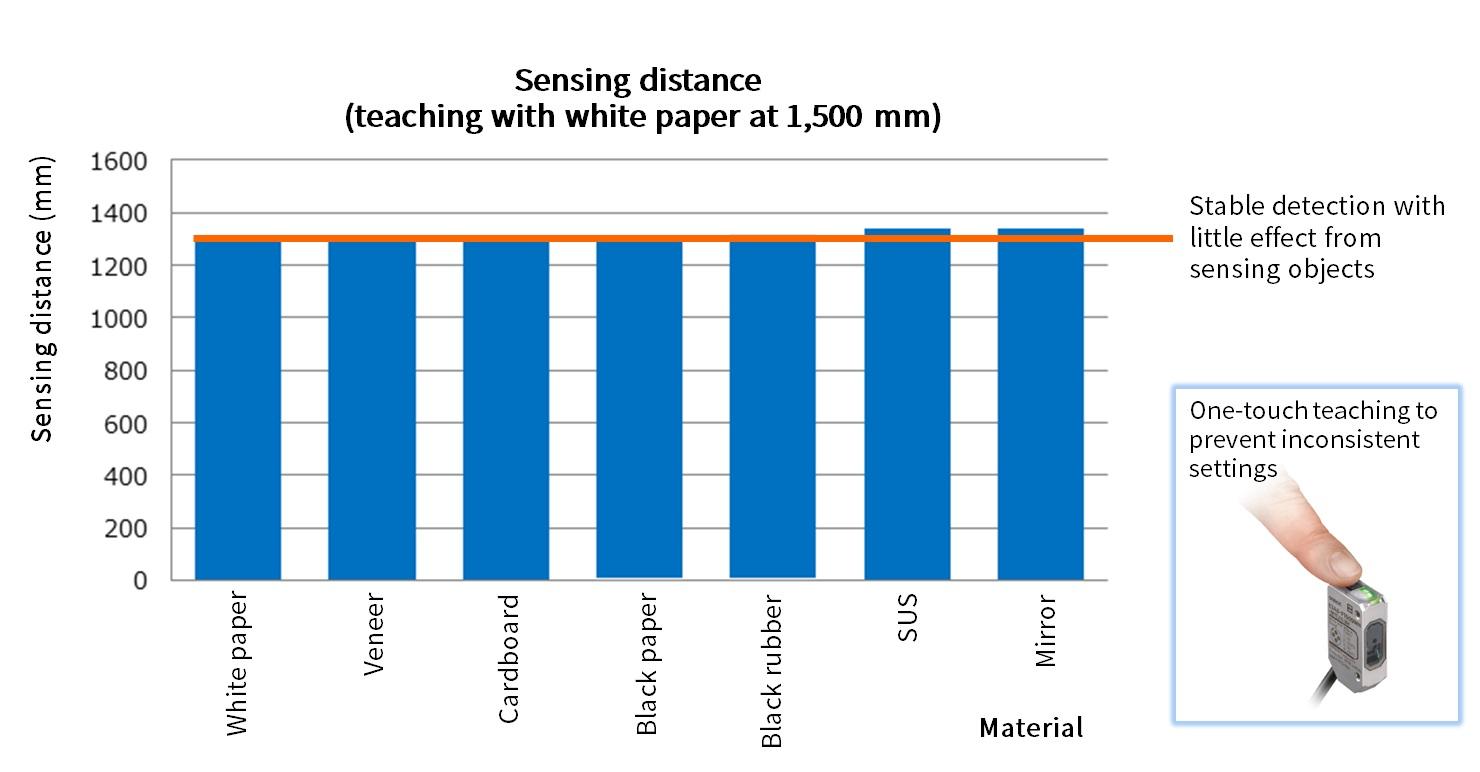
3.Industry's first: Antifouling coating prevents contamination on the sensing surface (Patent Pending(*5))
Dirty sensing surfaces can cause false detection due to the principle of photoelectric sensors. Therefore, unexpected recovery work after line stoppages and periodic cleaning were required to prevent lines from stopping. The E3AS Series with the antifouling coating on the sensing surface prevents water droplets, oil, and dust from sticking to the sensing surface, and keeps the lens from fogging as well. Therefore, the coating prevents contamination on the sensing surface in environments where oil or dust scatters, or steam generates, reducing false detection and cleaning frequency.
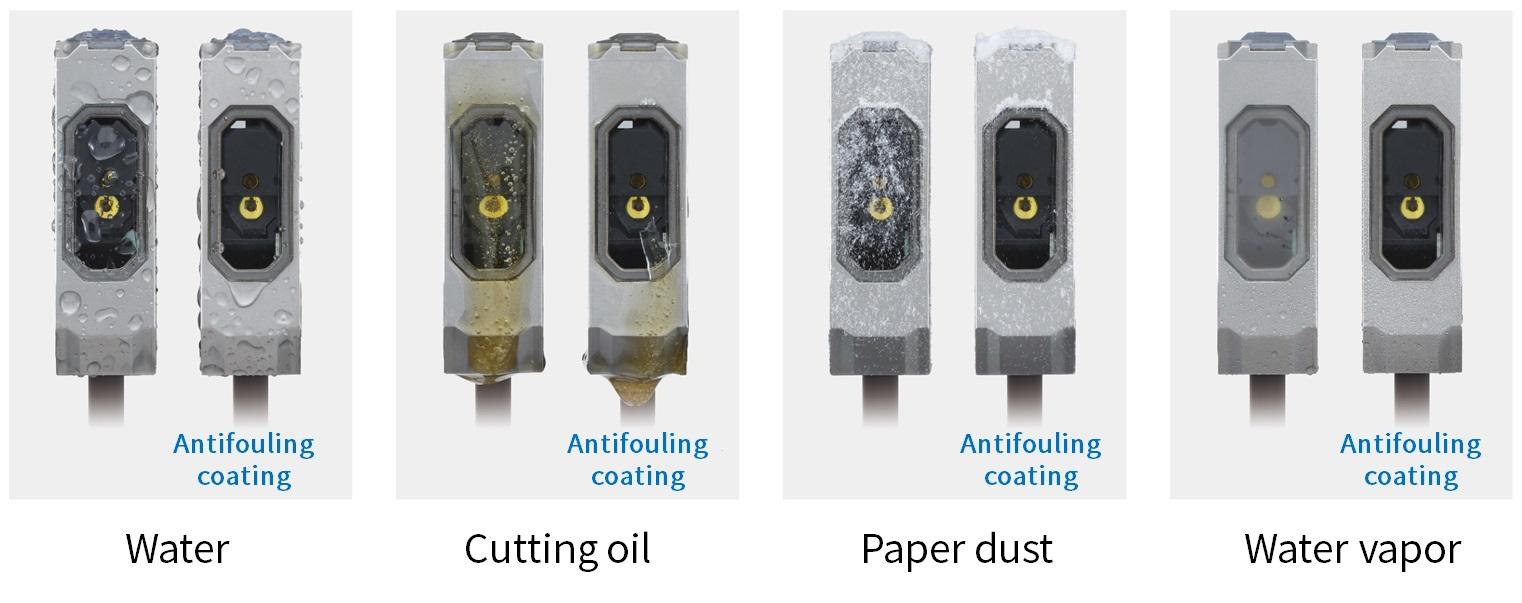
4.Laser welding technologies for different materials/metals for less sensor failures (Patented ⁽*5))
The E3AS Sensor case is made of stainless steel (SUS316L). OMRON's two unique technologies, the laser welding technology for different materials (stainless steel and resin) and laser welding technology for metals (stainless steel), enhanced the sealing and adhesion between the parts of the case, reducing failures in water (IP69K) and oil (IP67G) environments.
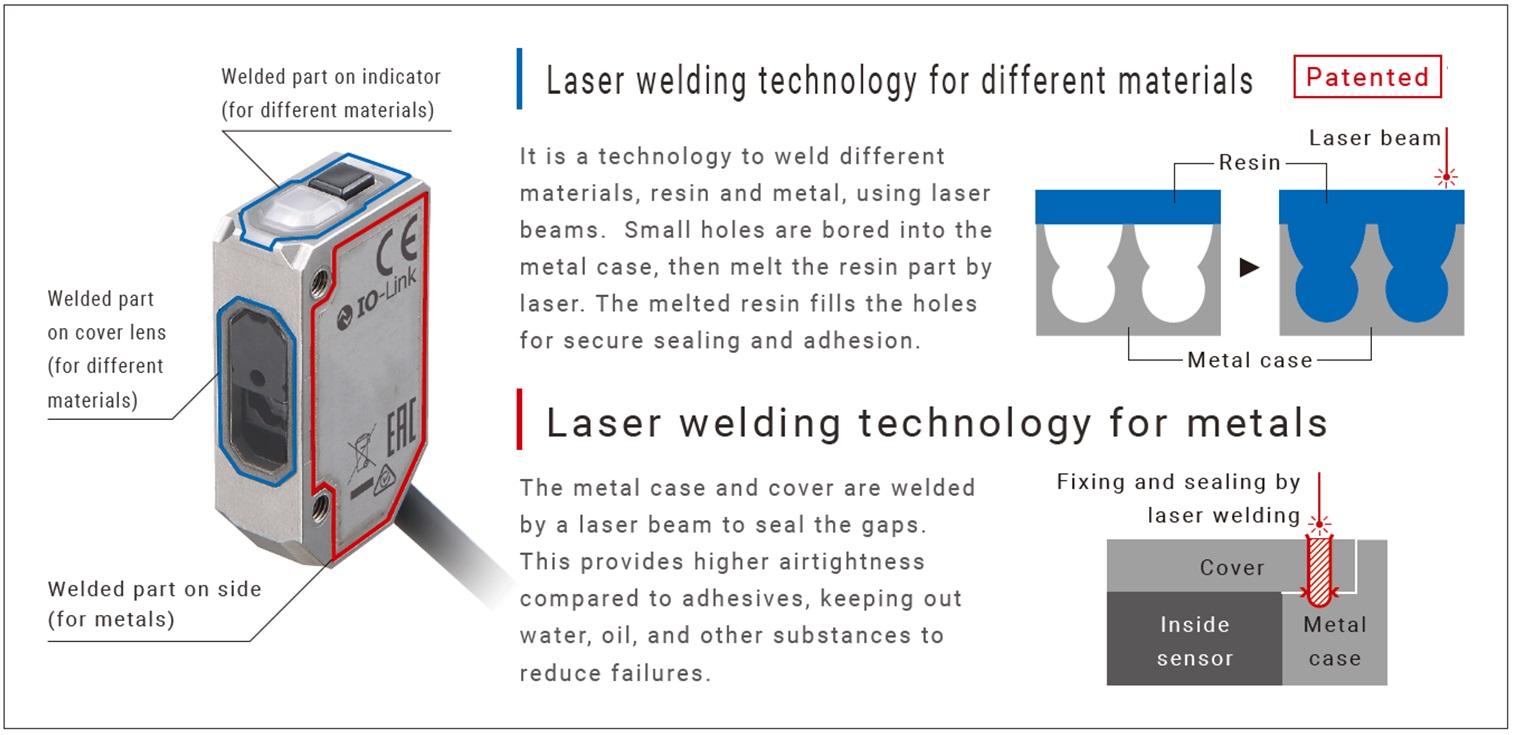
(*1) Class: For a reflective-type photoelectric sensor with the 25.4-mm mounting pitch width, and the sensing distance of 1,500 mm or over.
Based on OMRON investigation in September 2019.
(*2) Photoelectric sensors: Photoelectric sensors detect objects (presence or passing) using optical properties. When emitted light is interrupted or reflected by the sensing object, the amount of light that arrives at the receiver changes, and the presence or passing of an object is detected.
Photoelectric sensors are classified into three types.
1.Through-beam type: The emitter and receiver are installed opposite each other. When a sensing object passing between the emitter and receiver interrupts the emitted light, it reduces the amount of light that enters the receiver. This reduction in light intensity is used to detect an object.
2.Retro-reflective type: The emitter and receiver are integrated. Install a reflector on the opposite side. When a sensing object passing between the emitter and reflector interrupts the emitted light, it reduces the amount of light that enters the receiver. This reduction in light intensity is used to detect an object.
3.Reflective type: Integrated emitter and receiver capture the amount of light reflected when an object passes through and detect it. Installation of the receiver and reflector are not necessary, allowing for greater design flexibility and reduction of installation work.
(*3) Time of Flight (TOF): With TOF, the distance to a sensing object is calculated by measuring the time in which a pulsed laser passes from the emitter to reach the object and return to the sensor. It is less influenced by the characteristics of the object, dramatically increases the stability of presence detection, and reduces the time for selection and adjustment.
(*4) Five times longer than the previous models: comparison with E3Z-LL products
(*5) "Patent pending" means that we applied for a patent in Japan, and "Patented" means that we obtained a patent in Japan. (As of August 2019)
About "innovative-Automation"
As a leader in industrial automation, OMRON has extensive lines of control components and equipment, ranging from vision sensors and other input devices to various controllers and output devices such as servomotors, as well as a range of safety devices and industrial robots. By combining these devices via software, OMRON has developed a variety of unique and highly effective automation solutions for manufacturers worldwide. Based on its reservoir of advanced technologies and comprehensive range of devices, OMRON set forth a strategic concept called "innovative-Automation" consisting of three innovations or "i's": "integrated" (control evolution), "intelligent" (development of intelligence by ICT), and "interactive" (new harmonization between humans and machines). OMRON is now committed to bringing innovation to manufacturing sites by materializing this concept.
About OMRON Corporation
OMRON Corporation is a global leader in the field of automation based on its core technology of "Sensing & Control + Think." OMRON's business fields cover a broad spectrum, ranging from industrial automation and electronic components to automotive electronic components, social infrastructure systems, healthcare, and environmental solutions. Established in 1933, OMRON has about 35,000 employees worldwide, working to provide products and services in around 120 countries and regions. In the field of industrial automation, OMRON supports manufacturing innovation by providing advanced automation technology and products, as well as through extensive customer support, in order to help create a better society. For more information, visit OMRON's website: https://www.omron.com/.
Product introduction page: http://www.ia.omron.com/products/family/3779/
- Contact (media):
- Brand Communications Department
OMRON Corporation
Tel: +81-75-344-7175 - Contact (product information):
- Sensor Division, Product Business Division HQ.
Industrial Automation Company
OMRON Corporation
Tel: +81-75-344-7022




